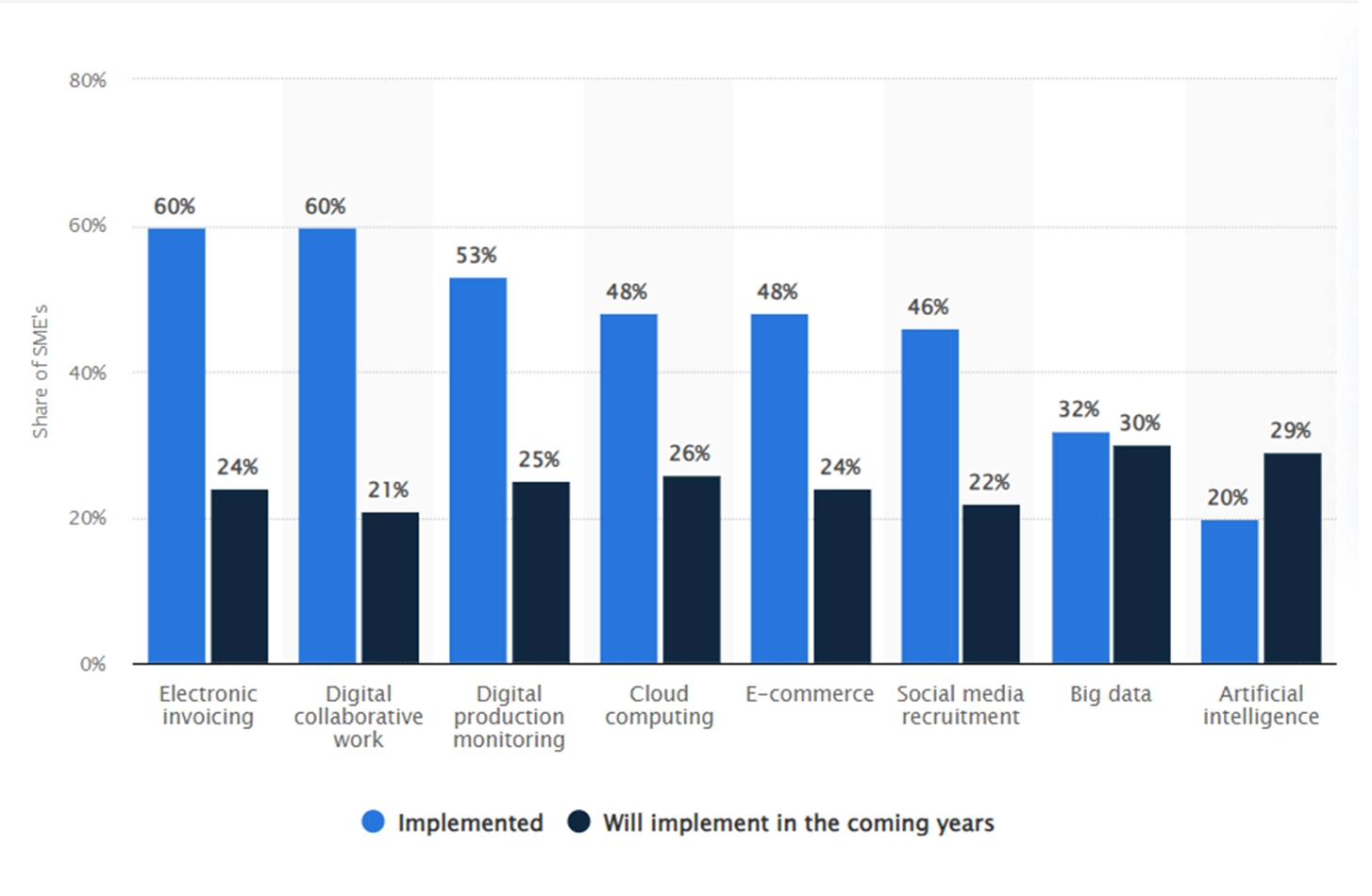Contents
Introduction
Digital shift is an evolutionary force that goes beyond adopting technological advancements, but often surrounded with digital transformation myths. Going beyond simply disassembling complex technology involves a more comprehensive approach that encompasses various technical aspects. This complexity is assimilated into the microservice architecture.
Technology is the brush, but human creativity paints the masterpiece. Just as AI enhances healthcare diagnostics, it’s the doctor’s expertise that saves lives. Likewise, technology alone cannot drive the digital transformation. The effect of custom development on advancement is unclear. Operations are streamlined by customized software, but too much personalization prevents improvements.
Small businesses have the power to change the course of history. It’s important to recognize digitization and digital transformation as separate concepts.
Join us in a journey of debunking digital transformation myths.
Microservices Architecture
Microservices Architecture is a crucial aspect of digital transformation, offering flexibility, scalability, and simpler maintenance. Technical proficiency is necessary but insufficient. Adopting microservices requires agile approaches, continuous integration, and DevOps practices.
Containerization technologies like Docker and orchestration tools like Kubernetes are essential for easier deployment and management. Microservices are dynamic components of the digital transformation puzzle, but they do not stand alone. The successful implementation requires coordination of people, procedures, and technology. For Instance, In 2019, McDonald’s implemented microservices to enhance its mobile ordering app. However, the company’s digital transformation also required menu innovation and customer experience redesign By dispelling digital transformation myths, businesses can utilize microservices’ potential while understanding their significance in the overall transformation story.
Here is an explanation by well-known American Software Engineer and Influencer
Serverless monoliths offer a ton of value. You can avoid the complexity and performance over head of microservices for applications that don’t need it, yet get all the benefits of a fully managed platform, and various autoscaling models to fit your needs.
— Kelsey Hightower (@kelseyhightower) February 2, 2023
Technology Alone
Misconceptions often lead businesses to believe technology is the sole driver of digital transformation. Technology is undoubtedly a major facilitator for change, but it’s important to dispel this digital transformation myths and comprehend where it belongs in the story of transition. Technology is not the only driving; it is merely an enabler. Failure to align the newest platforms and technologies with strategic goals and procedures will prevent success from being achieved. A holistic strategy entails optimizing operations, improving customer experiences, and seamlessly integrating technology into current workflows. It can be intimidating to learn technical lingo like AI, IoT, and cloud solutions. For example, utilizing AI-driven insights can transform decision-making, while cloud adoption promotes scalability and accessibility. If it is used wisely, technology is strong. The compatibility of digital transformation with people and processes is essential for its success. By dispelling the digital transformation myths like technology-alone fallacy, businesses can develop a roadmap that combines cutting-edge solutions with broad goals, resulting in a more thorough and successful transformation journey.
Here is a video for your clear understanding from HCL Technologies, a prominent IT service provider, discussing crucial elements like change, adaptability, and culture within the context of digital transformation.
Custom Development
Custom development, which is sometimes commended as a personalised solution, may increase complexity. The fallacy asserts that creating complex, customized systems will guarantee a smooth digital shift. The truth, though, is more complicated. A comprehensive strategy that combines technology alignment, process optimization, and strategic planning is required for digital transformation. Using only custom development could result in over engineered solutions that are not scalable and hinder agility. The alignment of business objectives with technology is a prerequisite for true transformation. Custom development being prioritized over process improvement could mean ignoring already available tools and platforms that might accelerate development. It is crucial to dispel the delusion that custom development is the only force behind digital transformation. A successful route towards true transformation is paved with the adoption of a comprehensive perspective that includes strategy, technology, and process improvement by keeping in mind that it is one of the digital transformation myths.
Not For Small Businesses
The idea that this paradigm shift in digital transformation is only applicable to corporate behemoths is untrue.
This myth is a result of the false belief that investing in digital transformation requires significant financial investment. The truth is that the fundamentals of digitalization may be modified to match the unique requirements and capabilities of smaller businesses. Small businesses can improve their operational efficiency and client experiences by utilizing cloud based solutions, scalable software, and simplified processes. A strategic integration of digital technologies is what it means to embrace digital transformation rather than a comprehensive redesign. Furthermore, it encourages competition and agility, two qualities that are essential in the dynamic corporate environment of today. By dispelling the digital transformation myths, we enable companies of all sizes to set out on a transformative journey toward a tech-driven future.
Learn how digital transformation may help your small business flourish and dispel the untrue notion that it is exclusive.
According to a report released by Statista on July 6, 2022, the digital implementation status of European SMEs in 2019 showed that 60% of them had adopted digital tools for their invoicing procedures.

Digital Transformation = Digitisation
Digital transformation myths arise when people fail to understand that digitization and digital transformation is not same.
It’s a prevalent misperception that digital transformation and digitization are interchangeable, hiding their important and fundamental characteristics. Digital information must be transformed from analog forms, such as paper documents, through the process of digitization. Although it is an important first step in the larger process of digital transformation, it is not transformation in and of itself.
By utilizing digital technology, digital transformation entails a comprehensive redesign of corporate processes, models, and consumer experiences. It’s a strategy transition that calls for adjustments to organizational, operational, and cultural practices. The tremendous benefits that real digital transformation promises will not be produced by merely digitizing things without deeper integration and innovation.
Equipping digitization with transformation encourages complacency because businesses may believe that utilizing digital tools is sufficient for maintaining their competitiveness. Digital transformation calls for innovative thinking, agile decision-making, and visionary leadership.
If this distinction is not made, a company will struggle to fully capitalize on the digital era and stay flexible in a constantly changing environment.
Conclusion
Digital transformation myths often overshadow the holistic approach required for successful implementation, and it is essential to address these misconceptions to unlock the true benefits of a comprehensive transformation strategy.
For firms attempting to negotiate the complicated terrain of technological evolution, dispelling digital transformation myths around digital transformation is essential.
Sparity will be your helping hand if you want to expand your digital transformation Journey to new heights.




